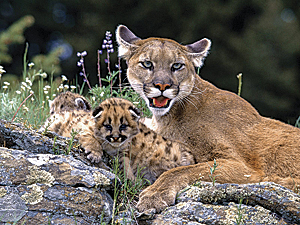The Importance of Connecting Protected Areas
Given the recent trends of urban expansion, species decline, and habitat conversion and fragmentation, conservation planners have developed a wide spectrum of tools devoted to inventorying and analyzing environmental conditions, simulating and forecasting change, and identifying and prioritizing areas for conservation action. More recently, a subarea of conservation planning known as connectivity conservation has resulted in an emphasis on the importance of combating the negative effects of landscape fragmentation on species populations. Connectivity conservation recognizes the importance of setting aside natural areas for protection purposes but goes a step further by stressing the importance of connecting these areas so that they may function as larger systems rather than isolated units. It is believed that such an approach may hold the most promise for protecting the greatest number of species, given the shifting environmental conditions due to climate change.
As a result, connectivity conservation has yielded a number of tools and approaches for modeling landscape connectivity within ArcGIS and other platforms. All approaches make assumptions about how wildlife will move through the landscape, given their individual interactions with local landscape conditions. These interactions and subsequent movements are represented as the relative permeability of the landscape or as the cost of movement to the individual. While connectivity modeling tools vary greatly in their underlying methodological processes and employ different techniques to model permeability and cost, the most common output is the delineation of spatially explicit wildlife corridors that link user-defined locations. Such outputs result in linearly arranged polygons that represent either structural connections between locations with given landscape characteristics or functional paths through which individuals are expected to move. While useful for planning purposes, such outputs lack the specificity necessary for informing the physical design of their interiors upon implementation.
The Automated Design Module (ADM) is intended to provide additional insight and guidance in the physical design of a wildlife corridor's interior by populating it with vegetation arranged in patterns known to impact wildlife movement in desired ways. Developing such a tool sheds light on the suggested physical structure and design of the modeled corridor's interior, aspects that current tools do not address. Additionally, the automated nature of this tool allows large swaths of the landscape to be designed based on widely available data pertaining to landscape characteristics and considerations, such as soil, terrain, and vegetation, among others. Until now, designing such large portions of the landscape has been impractical due to the massive time constraints that are required to manually develop such designs. Finally, the ADM allows analysis, modeling, and design to all be accomplished within an ArcGIS environment without the need to employ other graphic design platforms, resulting in a more streamlined workflow.
See also "Geodesign and Wildlife Corridors."
